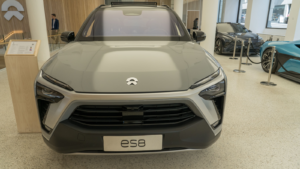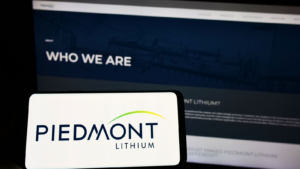
Global electric vehicle sales are set to accelerate, creating big opportunities for EV stocks.
For one, according to the International Energy Agency’s (IEA) Global EV Outlook 2024 report, China’s electric vehicle market could reach 45% this year, as compared to 25% in Europe and around 11% in the U.S. Overall, EV sales could reach 17 million this year, or about 20% of all vehicles sold all over the world.
Two, China just announced it would pay car owners about $1,400 if they replace their current cars with electric or hybrid models, as noted by The Wall Street Journal.
Three, we could see further, aggressive EV buying interest when the Federal Reserve starts cutting interest rates again. As it stands now, current rates have put a chokehold on the industry.
The other issue hurting greater adoption is the lack of EV charging infrastructure. Nearly 51% of Americans are concerned about that, says EY.com. However, with greater investment in infrastructure, we could soon see greater chances for further adoption.
We also have to consider that it’s time to buy the fear in many of the top, beaten-down EV stocks stocks, such as:
Nio Inc. (NIO)

The Nio (NYSE:NIO) stock has been a disaster over the last few months. Since topping out at around $9.50 in late 2023, it plummeted to a low of $3.61. However, it’s slowly starting to come back thanks to China’s plans to provide car owners with EV incentives.
In addition, after a good deal of disasters, analysts expect for Nio’s revenue to grow 18% to $9.1 billion, as it narrows its net loss to $2.2 billion. Plus, Nio sales are rebounding well. In its first quarter, for example, its EV sales topped its lowered guidance with 30,053 deliveries. Nio also expects to strengthen its competitive edge with the near-term rollout of its 2024 models, including the 2024 ES7, ET7 and ET5.
Analysts at DBS Holdings say NIO could see another 90% of upside, reiterating a buy rating. The firm added that vehicle margins could rebound to a range of 15% to 18% as the production of newer vehicles come online in upcoming quarters.
Li Auto (LI)

Another one of the top EV stocks, Li Auto (NASDAQ:LI) is showing big signs of life again, too.
After slipping form a high of about $46 to $23.04, the oversold electric vehicle stock is starting to rebound. Last trading at $26.86, I’d like to see it retest $32 initially. Helping, Citi analysts have a buy rating on the stock, with a price target of $43.60.
Analysts at Macquarie have an outperform rating on the stock, with a $40 price target. The firm added that Li Auto could achieve more than a million in unit sales by fiscal year 2026. They also noted LI stands alone in the wave of new “Chinese EV players due to having the highest volumes, vehicle margins and cash generation among peers,” as noted by Seeking Alpha.
I’d also take advantage of the latest dip buying opportunity. It won’t stay this oversold for long. Even better, the EV stock is just starting to pivot from over-extensions on RSI, MACD, and Williams’ %R. From its last traded price of $26.91, I’d like to see it retest $32.
Piedmont Lithium (PLL)

We can also look at rebounding shares of Piedmont Lithium (NASDAQ:PLL) – which recently received a key North Carolina mining permit.
Over the last two weeks, the North Carolina Department of Environmental Quality’s Division of Energy, Mineral, and Land Resources approved PLL’s mining permit for the construction, operation, and reclamation of the proposed Carolina Lithium project in North Carolina.
According to Piedmont Lithium President and CEO Keith Phillips, “We plan to develop Carolina Lithium as one of the lowest-cost, most sustainable lithium hydroxide operations in the world, and as a critical part of the American electric vehicle supply chain.”
“Technical studies have demonstrated that Carolina Lithium could be a low-cost producer of spodumene concentrate and lithium hydroxide, benefitting from exceptional infrastructure, minimal transportation distances, low energy costs, a deep local talent pool, and proximity to cathode and battery customers as well as local markets for the monetization of by-product industrial minerals,” added a recent press release.
On the date of publication, Ian Cooper did not have (either directly or indirectly) any positions in the securities mentioned. The opinions expressed in this article are those of the writer, subject to the InvestorPlace.com Publishing Guidelines.




